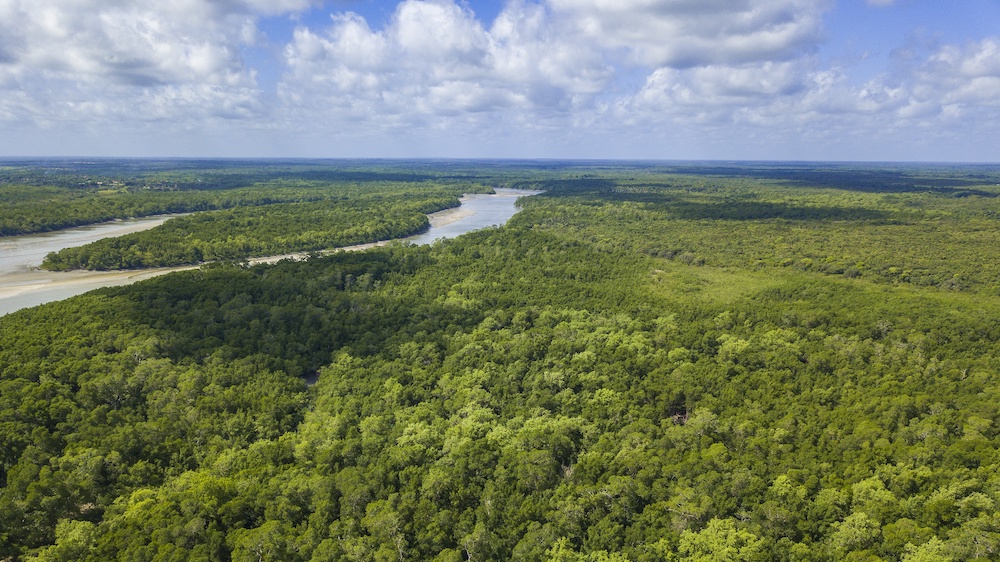If you’re interested in sharing your opinion on any cultural, political or personal topic, create an account here and check out our how-to post to learn more.
____
In Glasgow, Scotland, COP26 has kicked off, and it is the first time countries will meet after the UN’s International Panel on Climate Change released a new report highlighting the need for climate action at a huge scale. We’re currently off-track to meet the goals of the Paris Agreement and as an 18-year-old, my future is at risk. Parts of the Amazon in my home country of Brazil are now emitting more carbon than the rainforest can absorb, a tipping point that is the result of decades of climate inaction.
World leaders need to move climate solutions forward, and quickly. As the UN Intergovernmental Panel on Climate Change finds, carbon dioxide removal (CDR) is an important pathway to address past emissions by removing carbon pollution from the atmosphere. In the process, carbon removal can also boost economies around the world and help stop the worst impacts of climate change for my generation and the ones that will come after me. But countries like Brazil, which have not emitted nearly as much carbon as developed countries like the U.S., should not have to carry the burden of cleaning up this historic mess.
As one of the world’s largest emitters in history, the U.S. has an obligation to limit future climate pollution, but also to address the legacy climate pollution that it has spewed into the atmosphere since the 1800s. During the transition from fossil fuels to clean energy, additional U.S. investments in carbon removal will reduce the risk faced by countries most vulnerable to the impacts of climate change, in the Global South and beyond.
It is unfair to ask developing countries to shoulder the impacts of extreme weather and rising seas from a problem triggered by high-emitting countries whose industries have grown wealthy burning the fossil fuels polluting our climate. Further, it is unfair to ask countries like Brazil to lead CDR alone. The Amazon continues to be the lungs of our planet, and preserving the rainforest is the most important solution we have. But counting too much on nature-based solutions requires massive amounts of land and risks leading to land grabs. CDR is necessary for us to have a safe planet, but leaning too much on nature-based solutions risks becoming a threat to my Indigenous land in Brazil.
CDR methods like Direct Air Capture (DAC), which uses industrial vacuums to remove carbon from the atmosphere, is a promising climate solution because it requires small land areas and can remove significant amounts of carbon for an extended amount of time. But DAC is currently expensive and requires more government funding, research and scaling in order to grow from demonstration projects to widespread commercial use.
The U.S. has the financial resources and moral obligation to lead the way to help scale CDR solutions like DAC, which in turn can stabilize the climate, help future generations, and protect people and land in the Global South. The opening of the world’s largest DAC plant in Iceland highlights that CDR solutions are growing quickly. Additional investments and action on CDR from the U.S. and other developed countries are required to help this scaling happen even faster.
Carbon removal can help foster environmental justice by repaying the climate debt that the U.S. created through a century of unchecked fossil fuel pollution. As a paper in the Electricity Journal outlines, carbon removal investments in the U.S. should include an international justice perspective to ensure that countries that contributed the least to the climate crisis are not the most impacted. As the paper highlights, equity considerations of carbon removal also include intergenerational impacts of long-term climate change effects. Young people in Brazil and across the world must be able to live in a climate-safe future.
If done in conjunction with the necessary steps to get the world off its fossil fuel addiction, U.S. leadership in carbon removal can create jobs around the world while also reducing the risks of climate change.
As COP26 takes place, we must remember that effective leadership on climate change includes not only looking forward to cutting emissions in the future but also cleaning up the carbon mess the U.S. has already made of the climate in the past.
____
Adri Maffioletti is an 18-year-old who lives in Porto Allegre, Brazil. She is from the Guarani Indigenous community and organizes for climate action with Fridays For Future Brazil.
